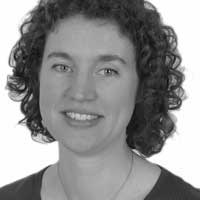Welcome to the fourteenth issue of Science in School Editorial article

This reflects the way scientists themselves work – an approach that makes them very employable, explains Yasemin Koc. “You present [scientists] with a problem, they divide it into its individual components, investigate where the problem might lie, and find an efficient solution”.
Scientists are not unlike children – always asking questions. How did the Universe begin? What is matter? And how do we know? These were just some of the questions that scientists addressed at the recent EIROforum teacher school at CERN, Europe’s largest particle physics laboratory.
Particle physics may sound a long way from the classroom, but even if you were not lucky enough to visit CERN, you can still introduce the topic into your lessons – visualising cosmic rays with a homemade cloud chamber. Visualising particles is also crucial to the ‘Radon school survey’, in which students measure radioactivity levels in their homes by literally counting holes left by ?-particles.
Radioactivity is a worry as a cause of genetic mutations, yet mutations are essential for evolution. Evolutionary adaptation occurs when particular DNA sequences help us to survive in our environment. Demonstrating which sequences are beneficial and how they help us survive is challenging but not impossible – for example in bacteria.
Whereas some microbes are dangerous, others have their uses, such as yeast – which is not only used to produce bread and beer, but can convert chemical energy into electricity. Alternatively, chemical energy can also be converted into light, and vice versa, as Peter Douglas and Mike Garley explain.
Light is also at the heart of Nataša Gros and her partners’ project: developing school experiments in spectrometry, such as measuring the levels of glucose in jam. Linked together, glucose units can to form starch. Although starch is so familiar, scientists are still investigating its structure, slowly, step by step, in collaborative teams – which brings us back in a full circle to the nature of scientific research.
I hope you enjoy these and the other articles in this issue – including the online-only ones.





